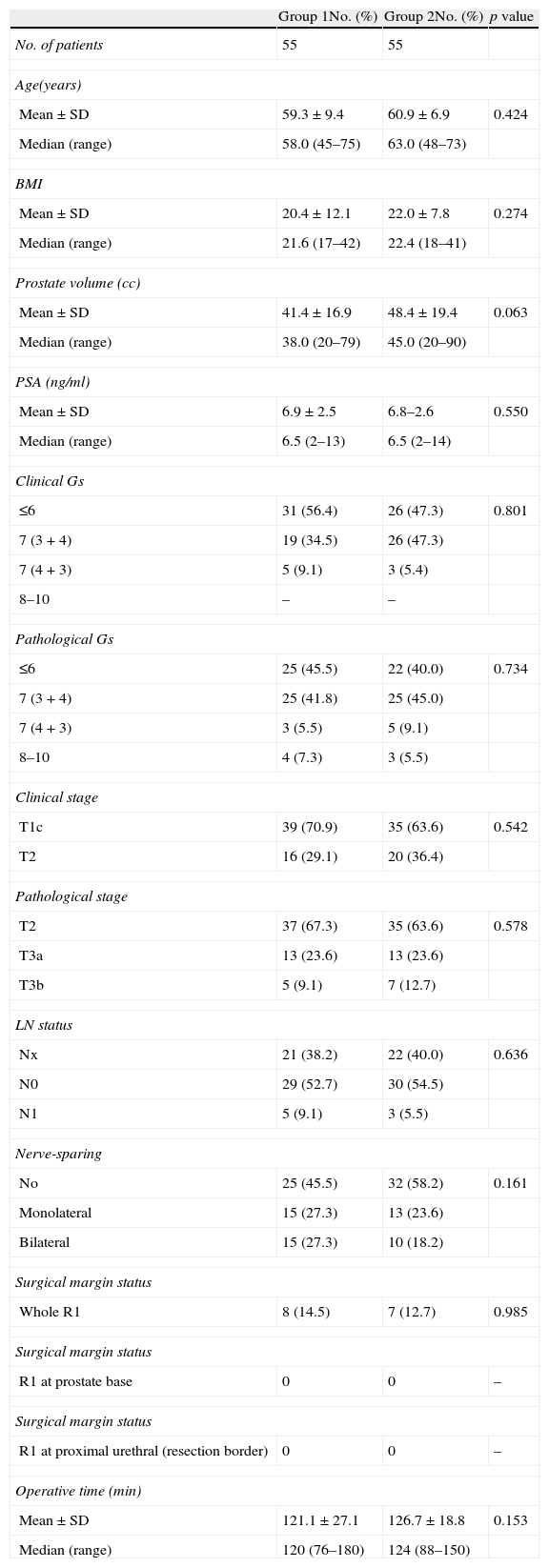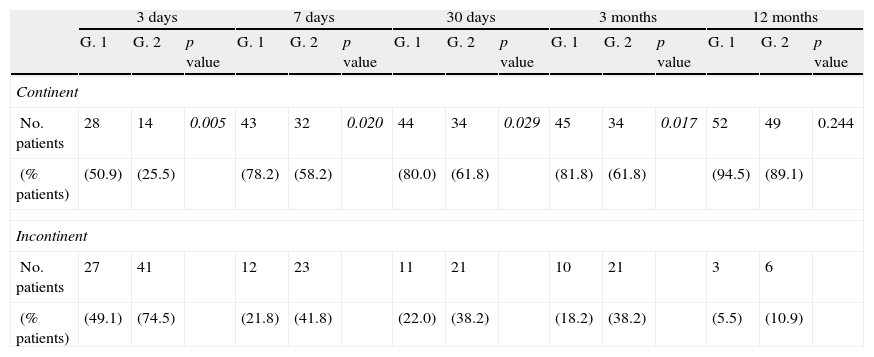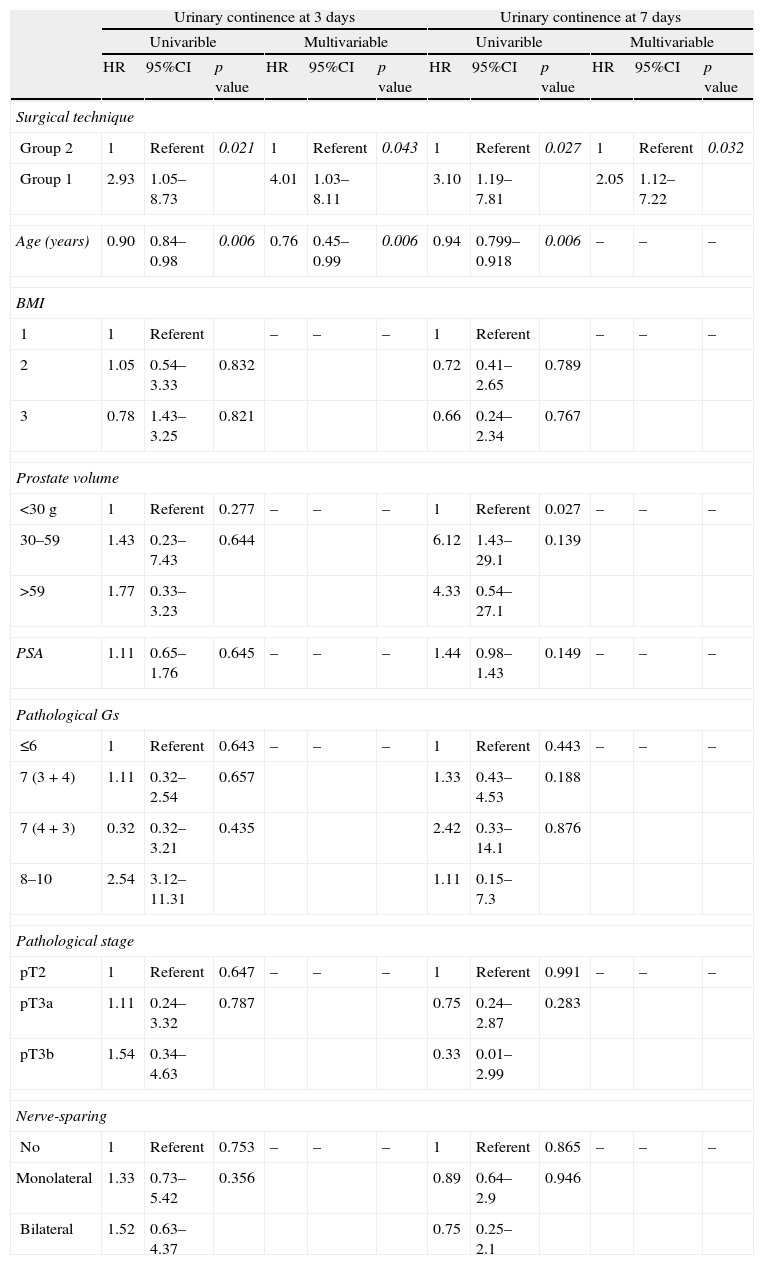To evaluate the influence of preservation of the muscular internal sphincter and proximal urethra on continence recovery after radical prostatectomy (RP).
Materials and methodsFifty-five consecutive patients with organ confined prostate cancer were submitted to RP with the preservation of muscular internal sphincter and the proximal urethra (group 1) and compared to 55 patients submitted to standard procedure (group 2). Continence rates were assessed using a self-administrated questionnaire at 3, 7, 30 days and 3, 12 months after removal of the catheter.
ResultsGroup 1 had a faster recovery of continence than group 2 at 3 days (50.9% vs. 25.5%; p=.005), at 7 days (78.2% vs. 58.2%; p=.020), at 30 days (80.0% vs. 61.8%; p=.029) and at 3 months (81.8% vs. 61.8%; p=.017); there were no statistical difference in terms of continence at 12 months among the two groups. Multivariate logistic regression analysis of continence showed that surgical technique was significantly associated with earlier time to continence at 3 and 7 days. The two groups had no significant differences in terms of surgical margins.
ConclusionsOur modified technique of RP with preservation of smooth muscular internal sphincter as well as of the proximal urethra during bladder neck dissection resulted in significantly increased early urinary continence at 3, 7, 30 days and 3 months after catheter removal. The technique does not increase the rate of positive margins and the duration of the procedure.
Evaluar la influencia de la preservación del esfínter interno muscular y la uretra proximal en la recuperación de la continencia después de la prostatectomía radical (PR).
Material y métodosCincuenta y cinco pacientes consecutivos con cáncer de próstata confinado al órgano se sometieron a PR con preservación del esfínter interno muscular y la uretra proximal (grupo 1), y se compararon con 55 pacientes sometidos a un procedimiento estándar (grupo 2). Las tasas de continencia se evaluaron mediante un cuestionario autoadministrado a los 3, 7 y 30 días y 3 y 12 meses después de la retirada del catéter.
ResultadosEl grupo 1 tuvo una recuperación más rápida de la continencia que el grupo 2 a los 3 días (50,9 vs. 25,5%; p=0,005), a los 7 días (78,2 vs. 58,2%; p=0,020), a los 30 días (80,0 vs. 61,8%; p=0,029) y a los 3 meses (81,8 vs. 61,8%; p=0,017); no hubo diferencia estadísticamente en términos de continencia a los 12 meses entre los 2 grupos. El análisis de regresión logística multivariante de la continencia mostró que la técnica quirúrgica se asoció significativamente con un tiempo temprano hasta la continencia a los 3 y 7 días. Ninguno de los 2 grupos presentó diferencias significativas en cuanto a márgenes quirúrgicos.
ConclusionesNuestra técnica modificada de PR con preservación del esfínter interno muscular liso, así como de la uretra proximal durante la disección del cuello de la vejiga, dio como resultado un aumento de la continencia urinaria temprana a los 3, 7 y 30 días y 3 meses después de la retirada del catéter. La técnica no aumenta la tasa de márgenes positivos ni la duración del procedimiento.










